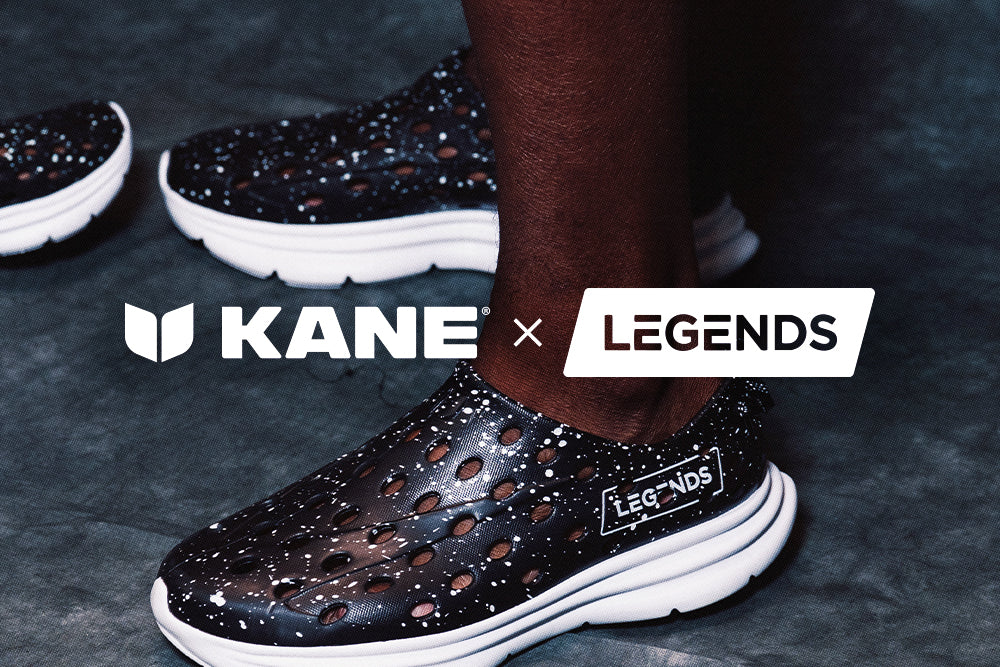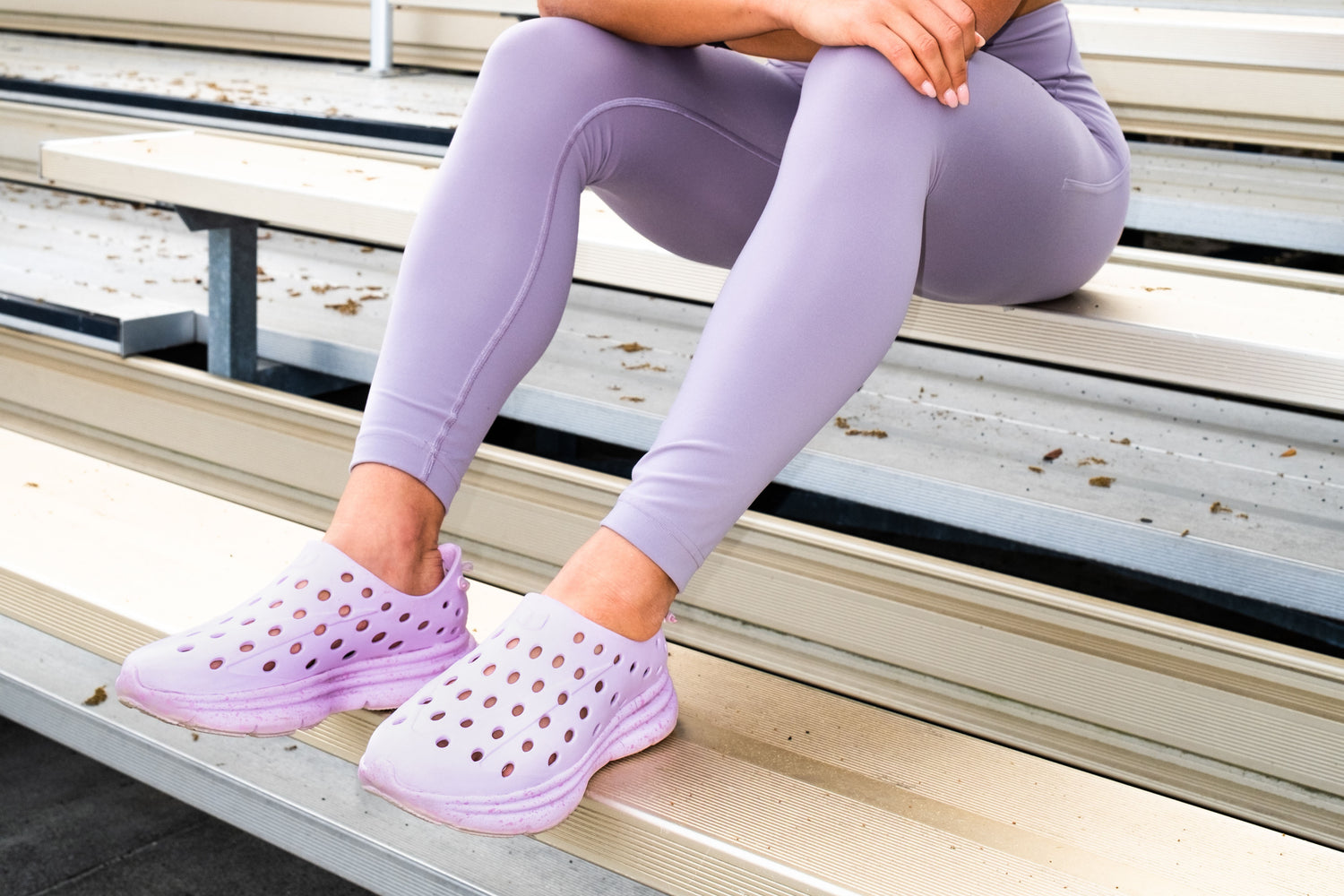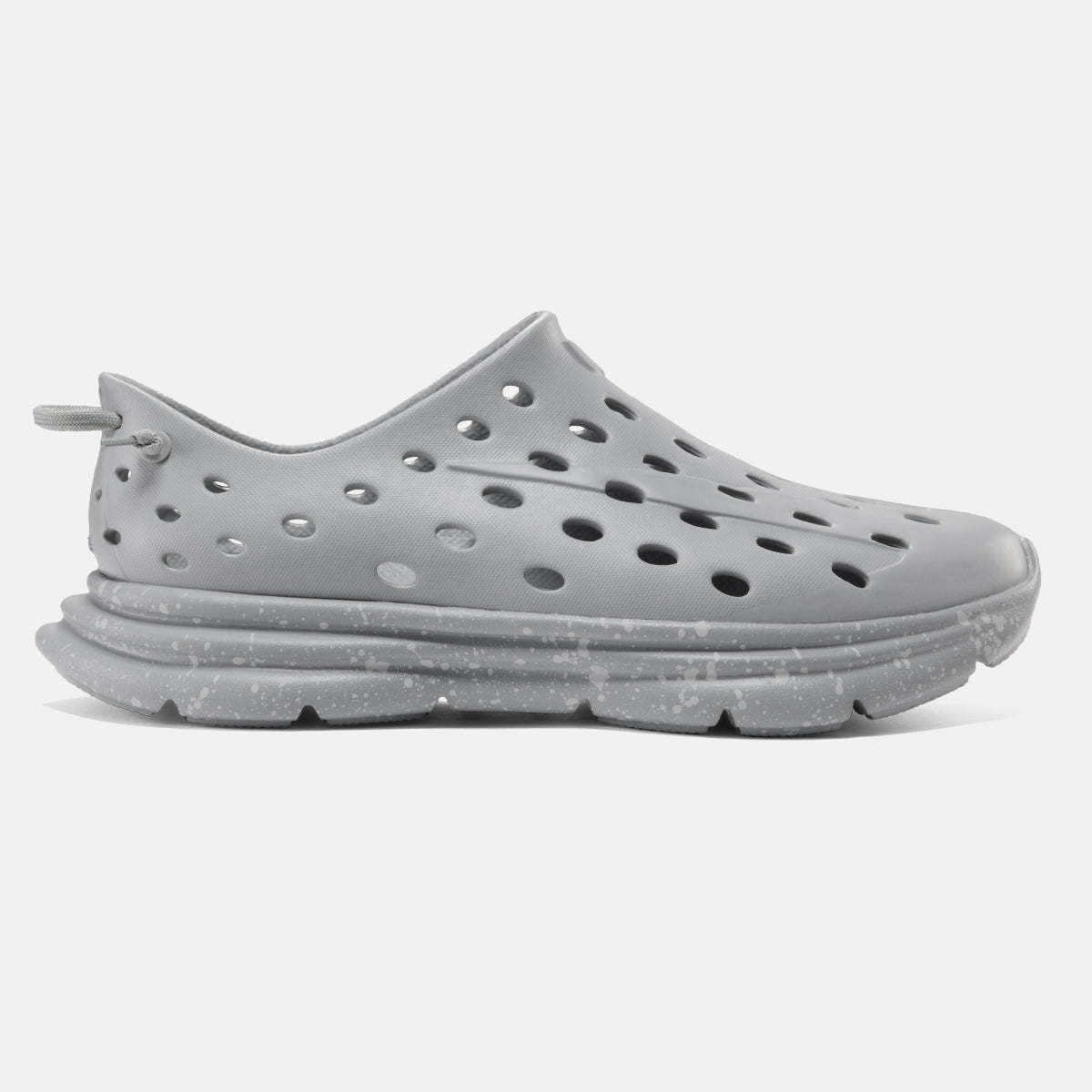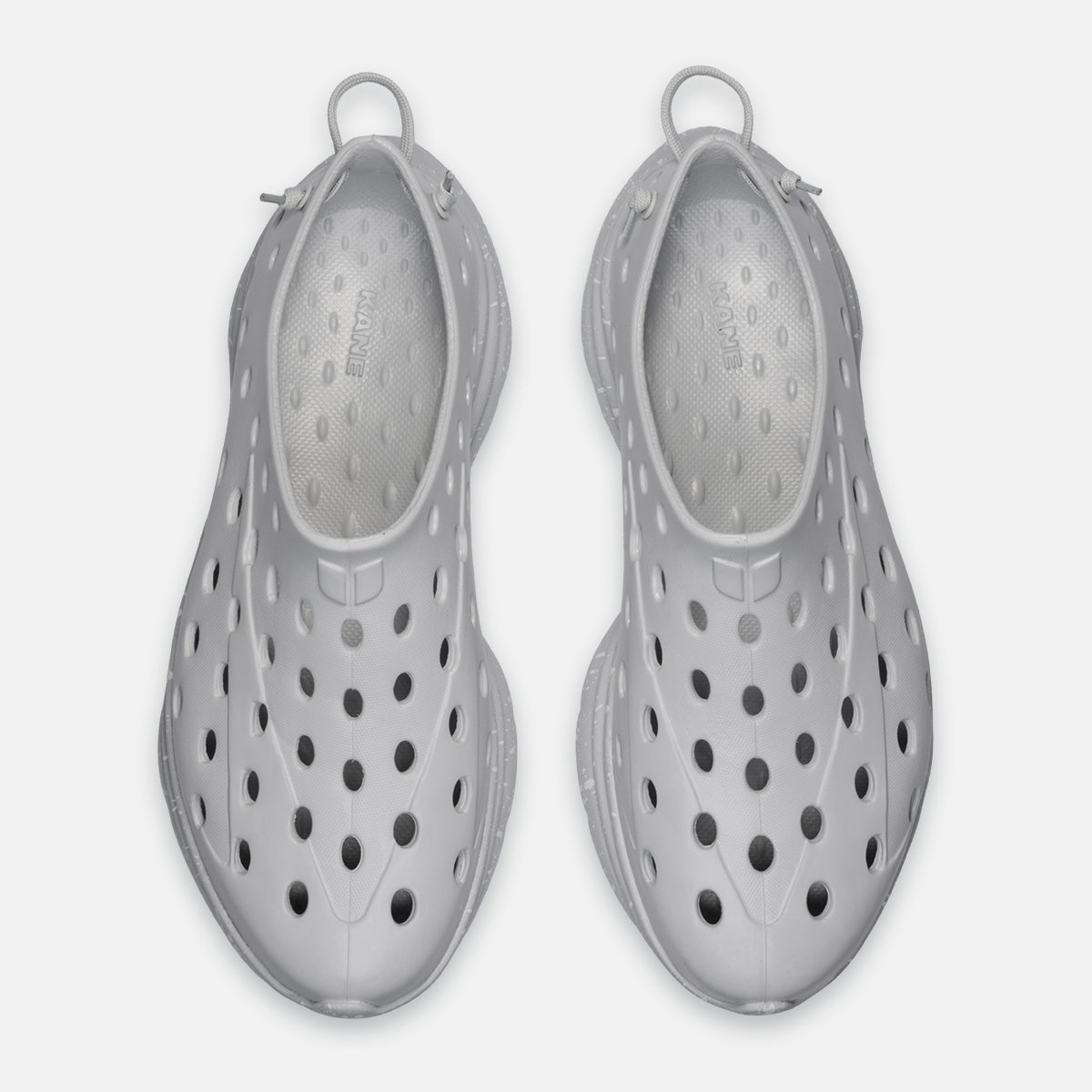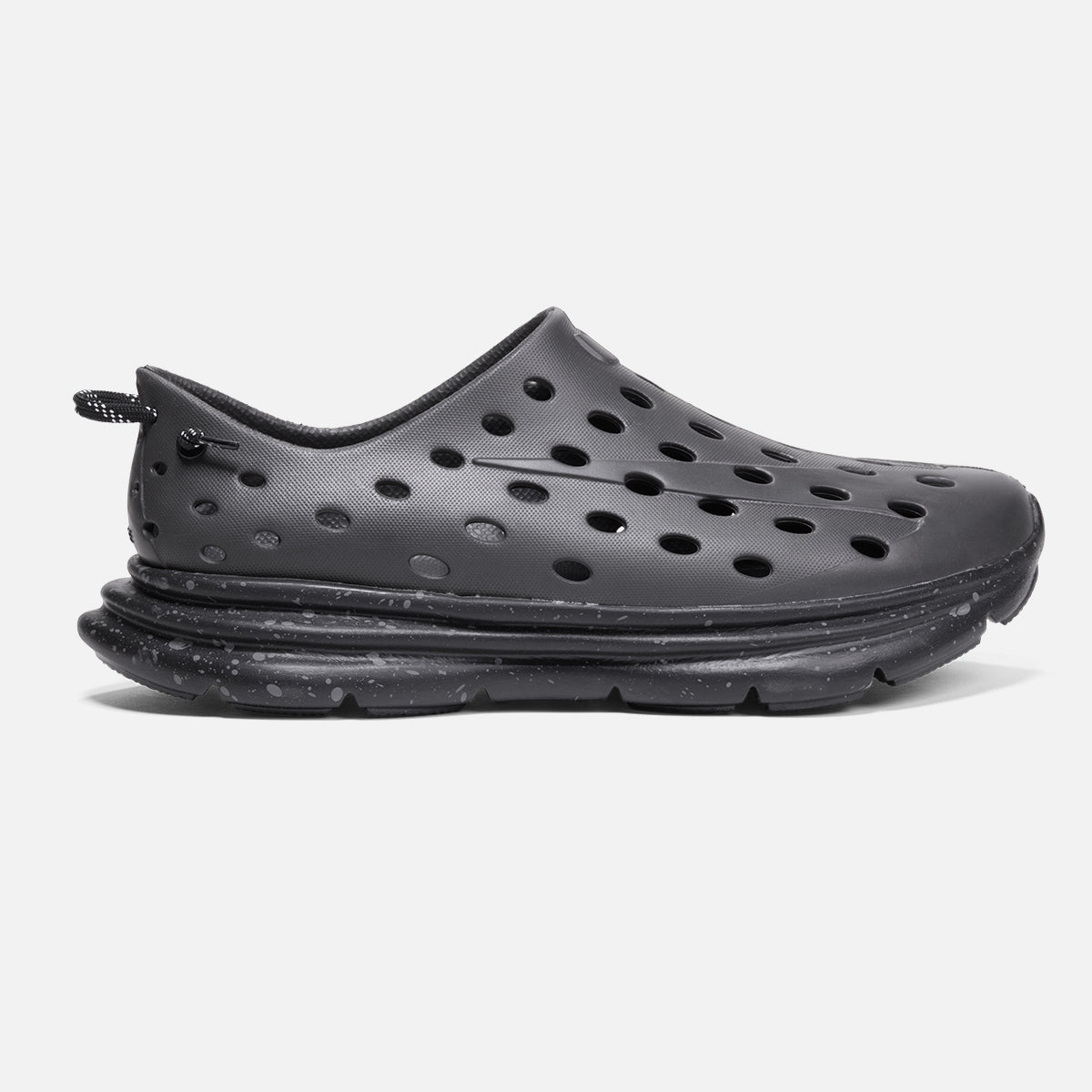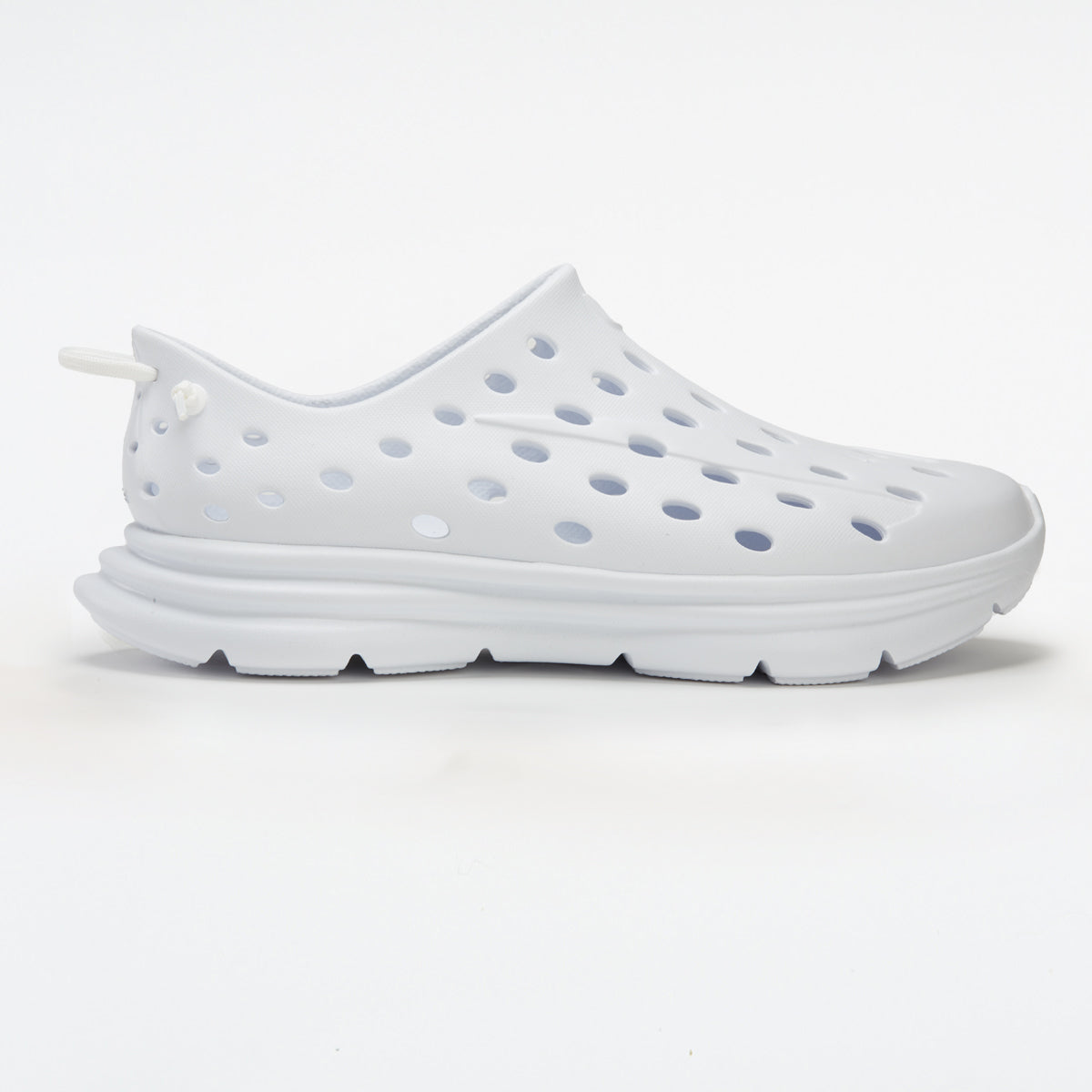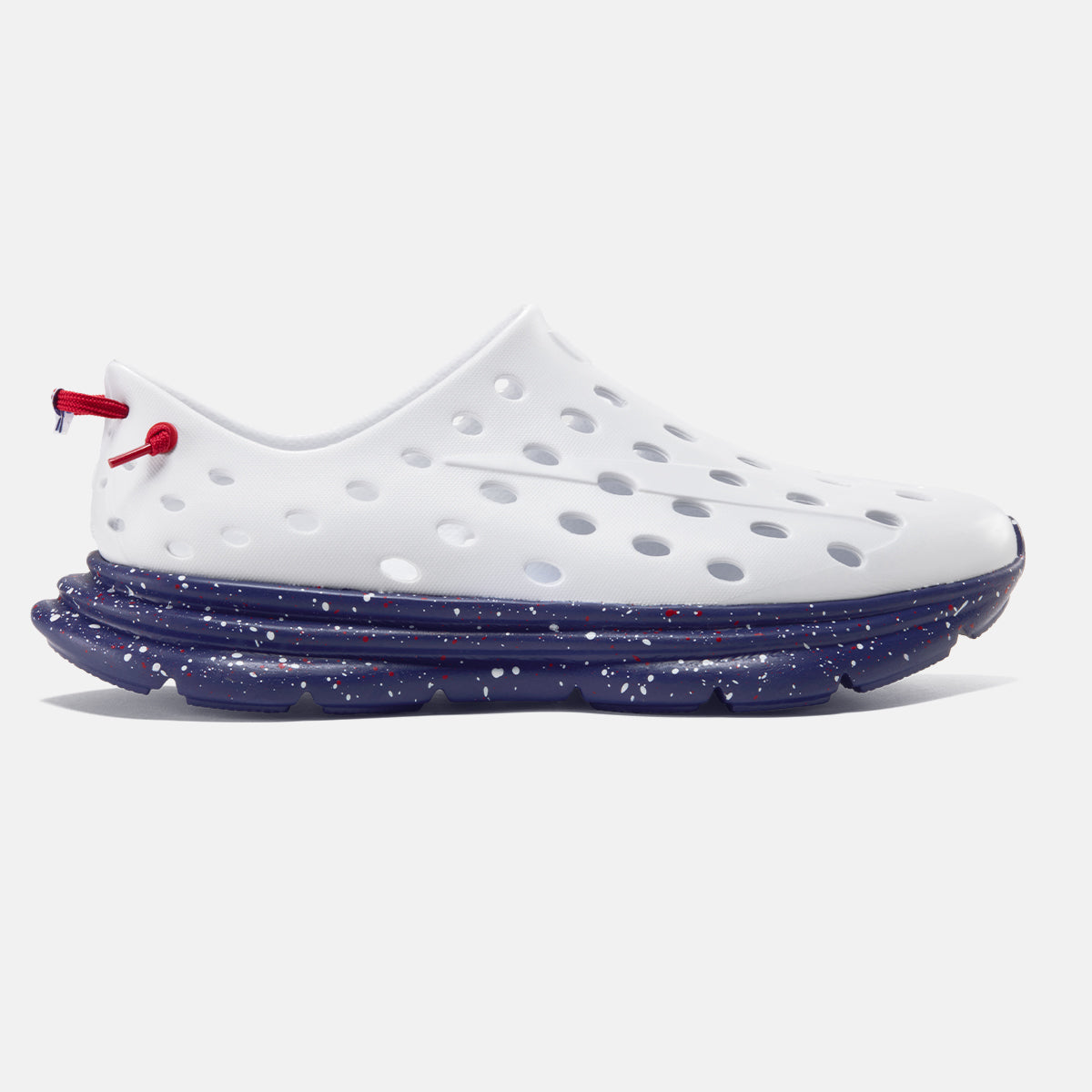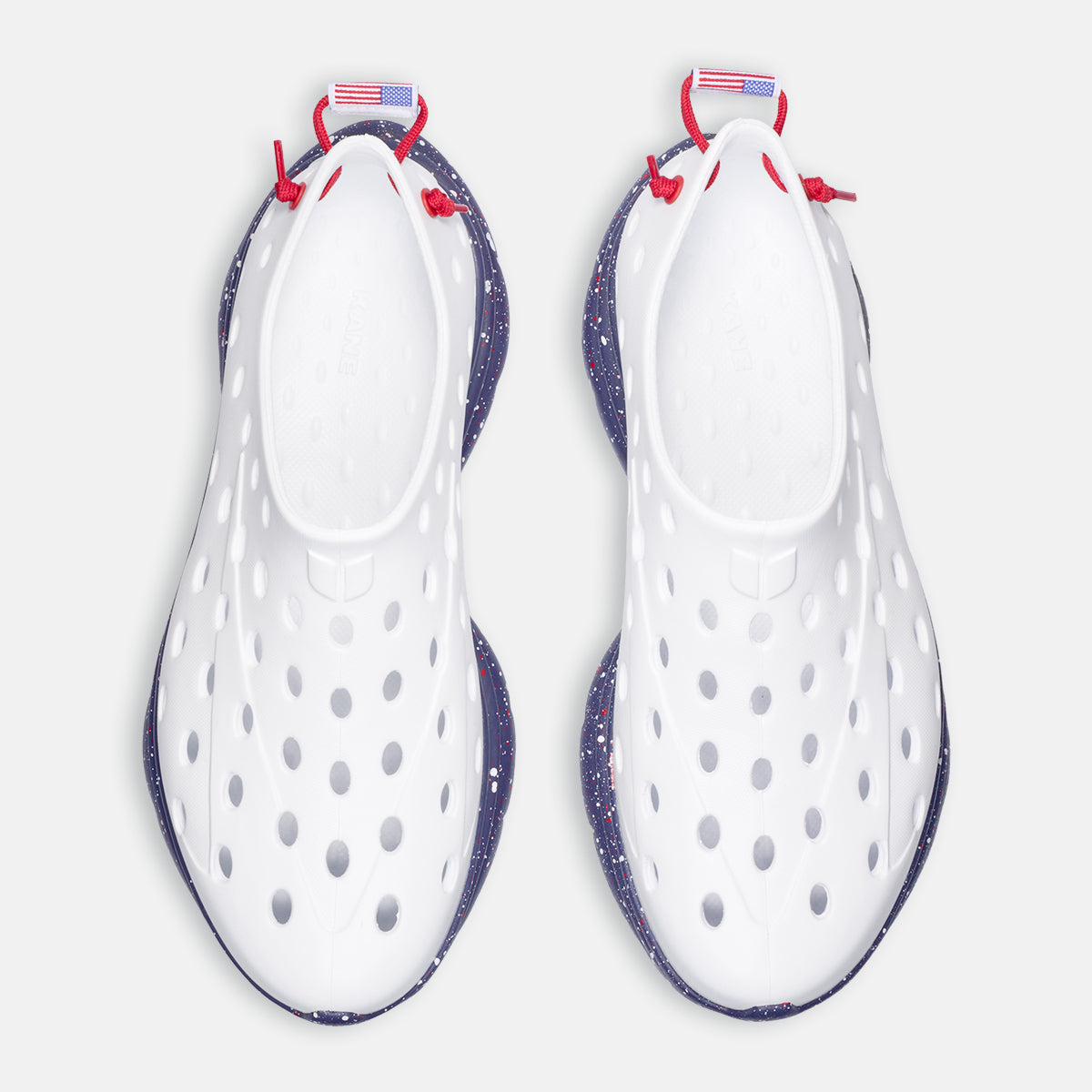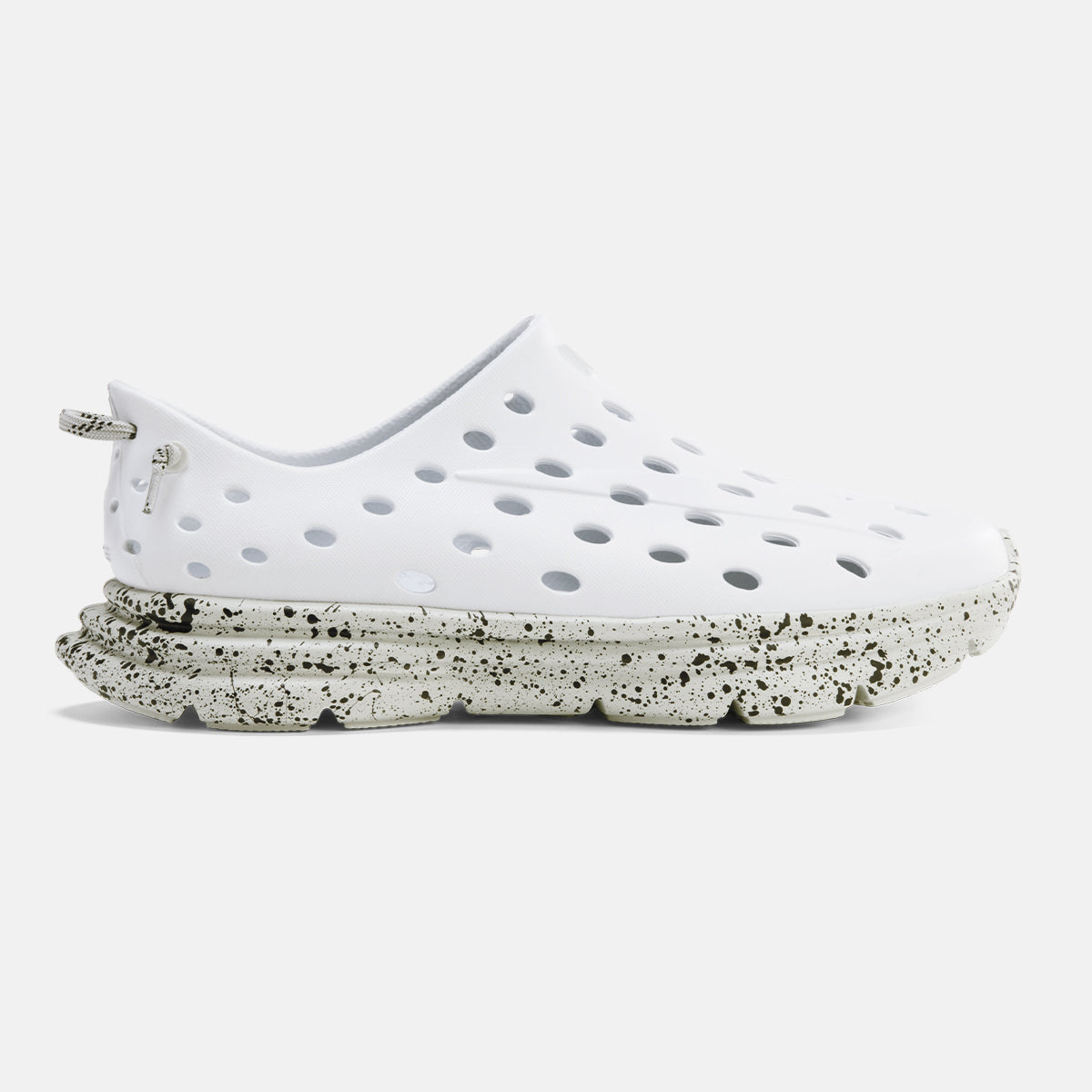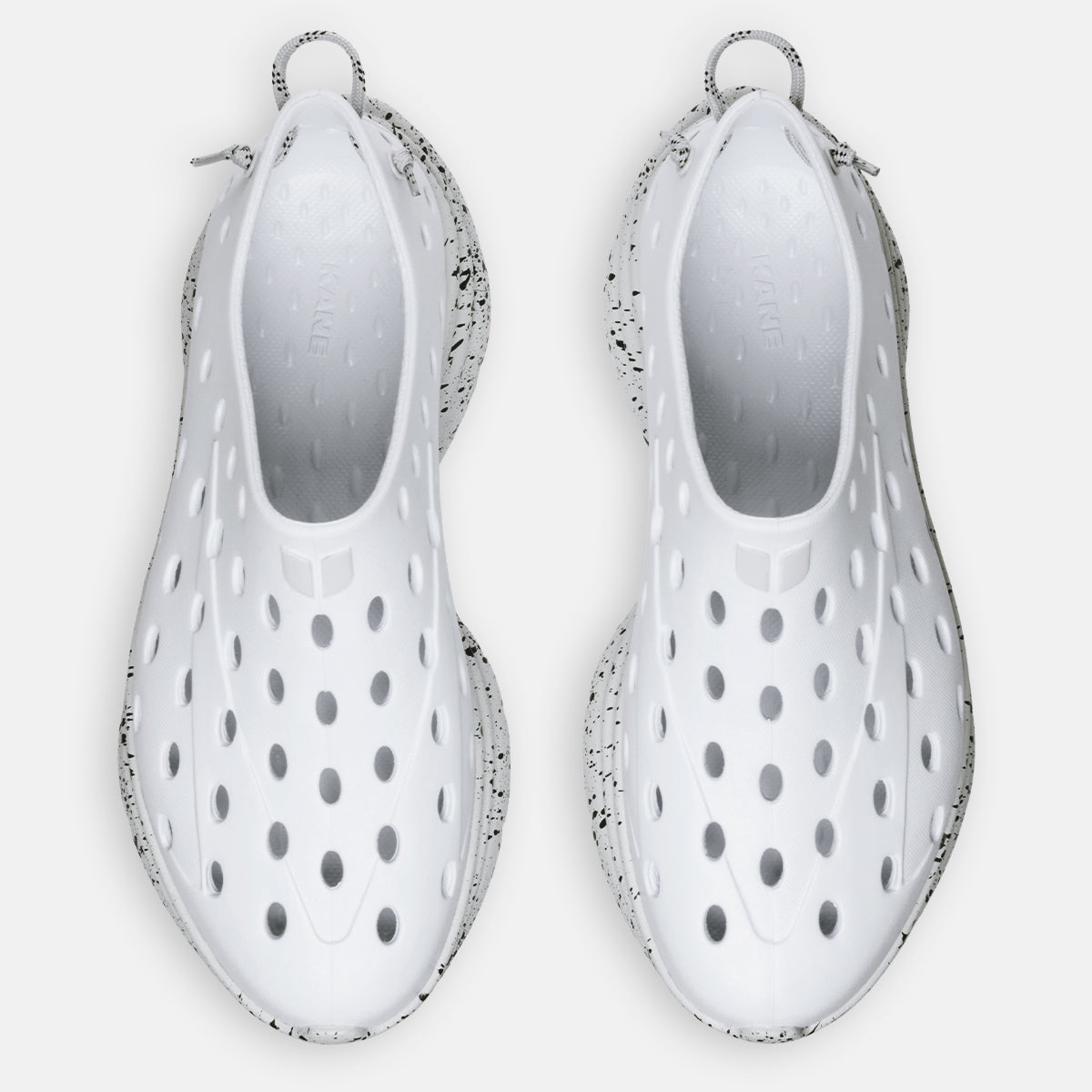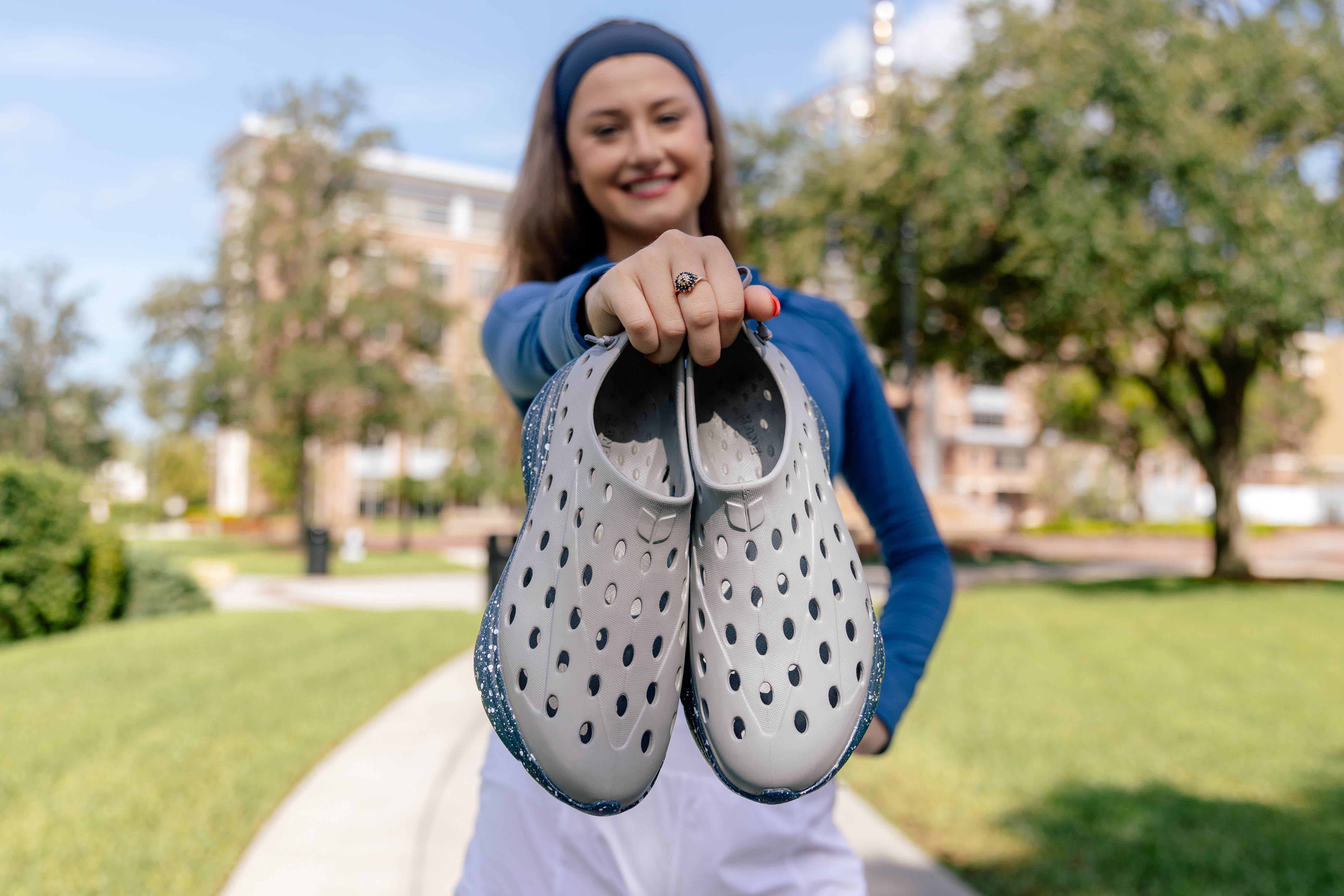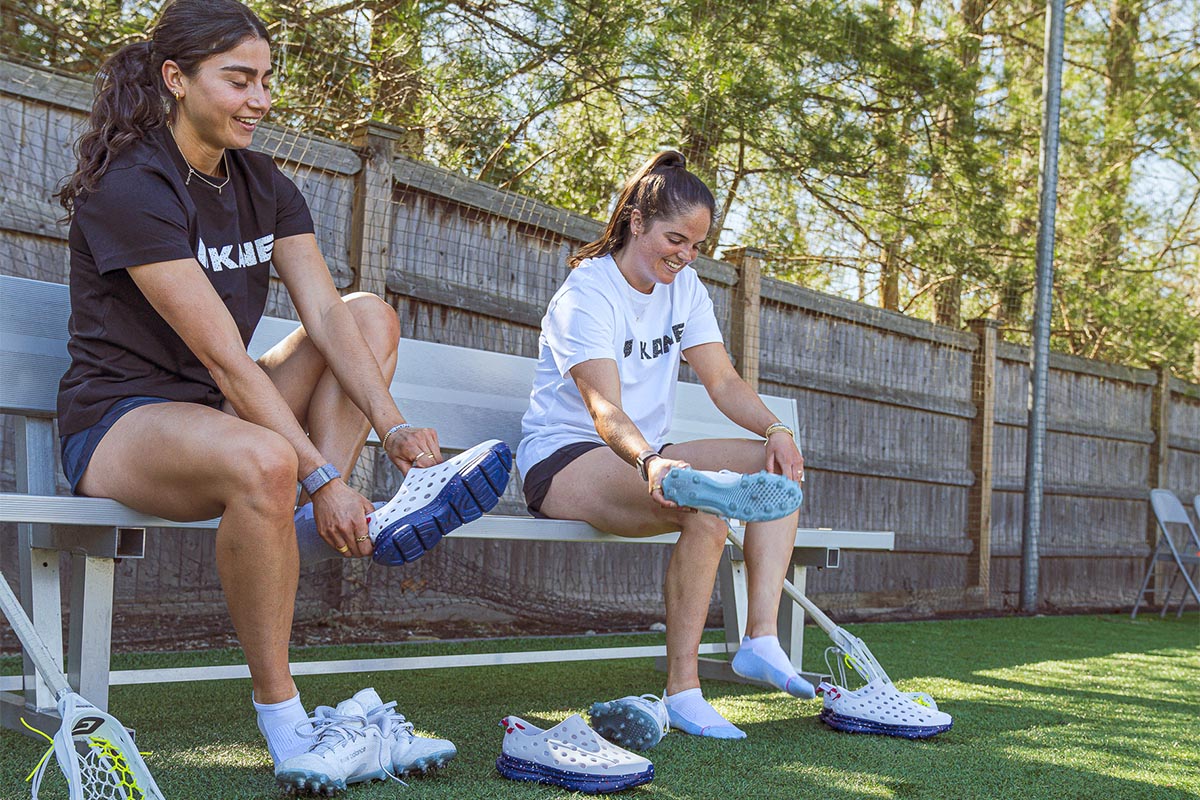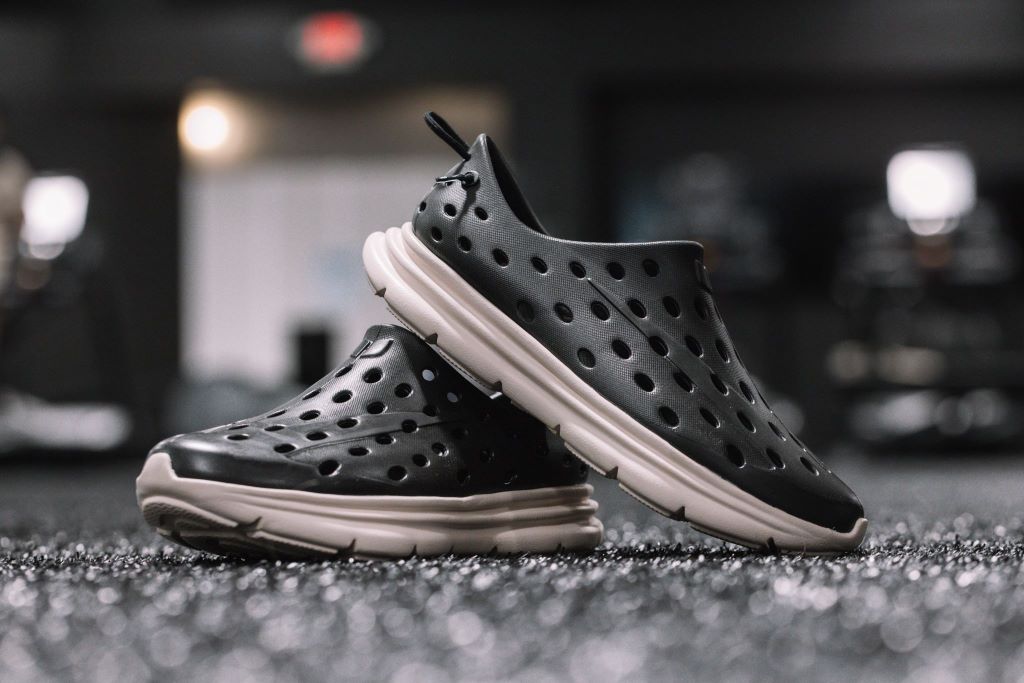In general, you can wear training shoes (or any shoe you like), for any activity you feel comfortable doing it in. However, it’s worth noting that different types of athletic shoes are designed for different kinds of activities.
And while most activities include some degree of casual walking, if you’re a serious walker (i.e. you walk long distances at a decent pace for fitness purposes) you may find that wearing running shoes or training shoes does not really meet your needs.
First, what are training shoes?
Training shoes (aka athletic shoes or sneakers) are specifically designed for physical training and exercise activities. They're engineered to provide comfort, support, and protection during various forms of exercise, including running, weightlifting, aerobics, and other gym workouts.
Key features of training shoes include:
Cushioning
Training shoes provide ample cushioning in the midsole and heel areas to absorb impact and provide shock absorption, reducing the stress on the feet and joints.
Support and motion control
They offer support for the arches of the feet to prevent overpronation (excessive inward rolling of the foot) or underpronation/ supination (insufficient inward rolling), depending on the individual's foot mechanics and the shoe design.
Stability
Many training shoes feature additional support structures in the midsole and upper to enhance stability during lateral movements and quick changes in direction.
Breathability
Training shoes are typically constructed with breathable materials and mesh panels to allow airflow, which helps keep the feet cool and dry during workouts.
Traction
Training shoes often have rubber outsoles with patterns or treads that offer good grip and traction on various surfaces, including gym floors or outdoor terrains.
There are different kinds of training shoes, including the running shoe
If you go into any athletic store, you'll probably be quickly overwhelmed by the different kinds of training shoes available. In general, some cater to specific activities or training preferences. But also, different styles within each category cater to different feet and gaits too. Some of the training shoe categories you'll find include:
Running shoes
Specifically designed for running, running shoes tend to prioritize cushioning, shock absorption, and flexibility.
Cross-training shoes or gym shoes
These shoes are versatile and suitable for a variety of activities, including weightlifting, cardio workouts, and gym training. They provide a balance of cushioning, stability, and support.
Weightlifting shoes
These shoes have a sturdy construction and a raised heel to provide stability and support during weightlifting exercises. They prioritize a solid base and minimize compression to maximize force transfer.
So, how are walking shoes different from training shoes?
As mentioned at the top, many of us throw on the same shoes for a good walk or run as we do to go to the gym. But depending on the kind of walker you are (yes, there are different kinds of walkers), you might want a walking shoe that’s specifically designed for this activity.
Walking shoes and training shoes have some key differences in their design and features, primarily due to the different requirements of each activity. Here are some ways in which walking shoes tend to differ from training shoes:
Cushioning
A good walking shoe typically has more cushioning in the heel and forefoot areas compared to training shoes. This extra cushioning is designed to provide shock absorption and support the natural heel-to-toe rolling motion of the foot during walking.
Flexibility
Walking shoes are generally more flexible than most running shoes or training shoes. They allow for a smoother and more natural bending of the foot, accommodating the natural walking gait (a rolling motion of the foot from heel strike to toe-off.)
Arch support
The best walking shoes provide good arch support, as walking involves a repetitive heel-to-toe motion that requires stability and proper alignment. They may have a supportive midsole or an arch support system to provide comfort and reduce the risk of arch-related discomfort or injuries.
Tread pattern
The tread pattern on walking shoes is usually more subtle compared to training shoes. Walking shoes prioritize traction on various surfaces, such as pavement or sidewalks, rather than the multidirectional movement and lateral stability required in training shoes.
Breathability
Walking shoes often have breathable materials and mesh panels to allow airflow and prevent excessive sweating during longer walks. This feature helps keep the feet cool and comfortable.
While walking shoes are designed primarily for walking and provide features tailored to that activity, training shoes are more versatile and cater to a broader range of exercises. Training shoes offer a balance of cushioning, support, stability, and traction to accommodate various movements, including lateral movements, jumping, and quick changes in direction.
Beyond the casual walking shoe: What kind of ‘walking’ are you talking about?
Walking is a key part of our existence. We walk around our homes, to and from our car, to the corner store for a carton of milk, or to take the dog around the block for a walk. When it comes to casual, short walks like these most of us don’t need to overthink our shoes too much: As long as you’re comfortable, you’ll be good! That includes wearing training shoes.
However, many of us have different walking demands and it’s worth considering the kind of walking you’re doing and whether your footwear choice is giving you the support and comfort you need.
For example, I often think I’m taking my dog out for a short jaunt along the waterfront, but if it’s a beautiful day, I can end up walking briskly for more than 10k across a mix of terrains from sidewalks to park trails to the beach. My training shoes may withstand that kind of walk, which still counts as a ‘casual walk’, but it’s probably not the ideal choice.
Beyond casual walking, there are much more serious forms of walking that come with their own specialized footwear. These include:
Race walking
Race walking is a competitive sport governed by specific rules It is a discipline that requires participants to maintain contact with the ground at all times and maintain a straight knee from the time the foot makes contact with the ground until the leg passes beneath the body. Race walkers move at a fast pace and strive for maximum speed while adhering to these technical requirements. Special race walking shoes are used to provide support and enhance performance.
Marathon walking
Marathon walking involves participating in a marathon or long-distance walking event. Participants cover a distance of 26.2 miles (42.195 kilometers) entirely on foot. Unlike race walking, marathon walking is not subject to the same strict rules and technical requirements. Participants may walk at a steady pace or incorporate intervals of walking and jogging based on their fitness level and personal goals. Comfortable and supportive walking or running shoes are typically worn during marathon walking.
Hiking
Hiking refers to walking in natural environments, often on trails or paths in parks, forests, mountains, or other outdoor areas. Hiking can range from leisurely walks on easy terrain to more challenging hikes that involve steep inclines, uneven surfaces, and longer distances. The duration of hikes can vary from a few hours to several days. Hiking shoes or boots with sturdy soles, ankle support, and good traction are recommended to provide stability, protection, and grip on different terrains.
One last reason to keep your shoes separate: They’ll last longer!
If you’re still not convinced that you should consider separate shoes for training and walking, here’s another consideration: It will help your shoes last longer.
Unless you have a serious injury history, you can probably walk in almost any footwear, from flip-flops to stilettos. However, when you’re training, you absolutely need your shoes to be in peak condition to give you the support, stability, cushioning, and traction you need.
Training shoes that are worn too much, wear out faster. So, it’s a general best practice to keep your training shoes for training so that they’ll support you for longer.
The lifespan of exercise shoes can vary depending on factors such as the frequency and intensity of use, the type of activity, the individual's body weight, and the quality of the shoes. However, as a general guideline, it is recommended to replace exercise shoes every 300-500 miles (480-800 kilometers) of use or every 6-12 months, whichever comes first. Here are some ways to help maintain the longevity of exercise shoes:
Rotate your shoes
Alternate between two or more pairs of exercise shoes to allow each pair to dry out fully and recover between uses. This can help prevent excessive wear and extend the lifespan of the shoes.
Use appropriate shoes for specific activities
Different activities may require specific types of shoes designed for the associated movements and impact. Wearing shoes appropriate for the activity can help prevent premature wear and tear.
Avoid using exercise shoes for non-exercise activities
Using your exercise shoes exclusively for exercise can help prevent unnecessary wear and extend their lifespan. Avoid using them for everyday activities like walking around or running errands.
Clean and care for your shoes
Regularly clean your exercise shoes to remove dirt, debris, and sweat that can accumulate on them. Follow the manufacturer's guidelines for cleaning and maintenance. Avoid machine washing unless specifically recommended by the manufacturer.
Replace worn-out shoes or damaged shoes
Pay attention to signs of wear and tear, such as worn-out treads, deteriorating cushioning, or visible damage to the upper or sole. When your shoes show significant signs of wear or lack the necessary support, it's time to replace them to maintain optimal comfort and performance.
Recovery shoes are also a thing!
Not to bombard you with yet another kind of footwear, but if you are a serious exerciser or have a history of injury, you might also consider recovery shoes.
Recovery shoes, also known as post-workout or post-activity shoes, are footwear specifically designed to support the recovery process after physical exercise or strenuous activities, including standing all day at work.
These shoes aim to provide comfort, cushioning, and support to the feet and lower limbs, helping to alleviate muscle fatigue, promote circulation, and facilitate the body's natural recovery mechanisms.
Active recovery shoes typically have certain features that set them apart from regular athletic shoes or casual footwear. Kane’s recovery shoes provide excellent support, comfort, and durability for those in need of top-notch recuperative footwear. Featuring an adjustable hook-and-loop single strap synthetic upper, plush TPR footbed as well as a durable injected EVA outsole, these kicks come with all the right features to assist you during your rehabilitation journey.


